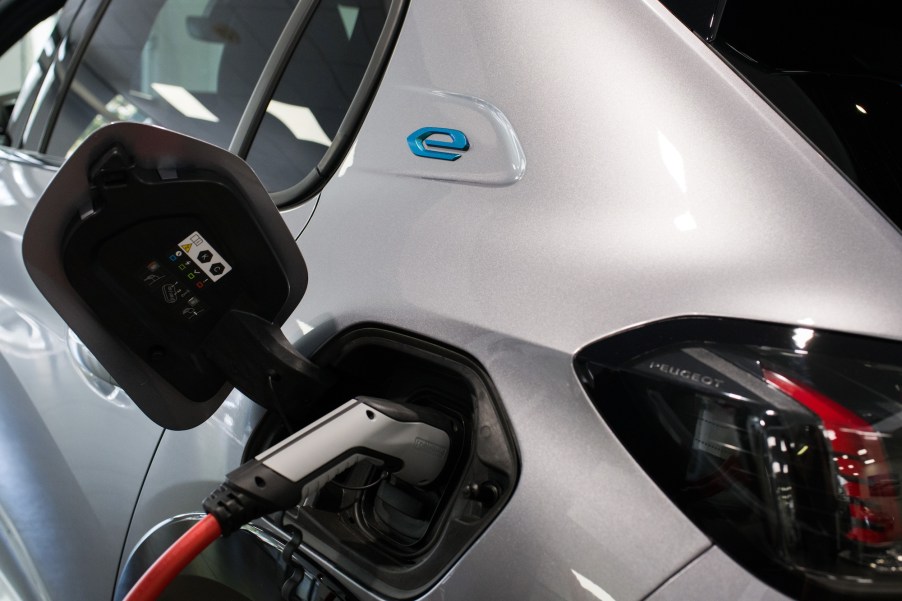
How Fast Does an Idling EV Burn Through Driving Range?
There’s a lot of talk about how different features impact the driving range of EVs. For example, how much energy will an air conditioner use? But you may wonder how much it will drain your battery to simply idle. Whether you’re waiting in a school pick-up line or stuck in a massive traffic jam, how much of your driving range will you lose while you’re sitting there? Here’s how idling affects your electric car’s efficiency and how that compares to an internal combustion engine.
Energy consumption averages for electric vehicles

Consumers are accustomed to measuring the efficiency of a vehicle by the number of miles it can travel per gallon of gas or diesel used. But as more drivers transition to EVs, they have to get used to a new way of looking at efficiency.
The energy use of an EV is measured in how many kilowatt-hours are used per 100 miles traveled (kWh/100mi). You can find this average for a specific car on its EPA fuel economy sticker or in the owner’s manual.
The federal Department of Energy also maintains a list of the efficiency of EVs on the market. It also shows the miles per gallon equivalent (MPGe), which is how far a car can travel on 33.7 kWh, but many people find this measurement misleading. There are too many factors, including the fluctuating price of electricity, to make a direct comparison.
According to the Department of Energy website, EVs range in efficiency from 53.3 kWh/100 mi to 23.7 kWh/100 mi. Naturally, this measurement applies to vehicles moving down the road. But what about when an EV is idling?
How much energy does an idling electric vehicle use?
The average efficiency may tell you how much energy it takes to drive an EV, but it doesn’t mean you what it takes to sit still. If you’re stuck in a traffic jam that seems endless, how much of your driving range will you use?
The estimates for how much energy is used when idling vary. According to WCNC, an EV uses roughly 1 kWh to idle. However, EV owners on Reddit report that their cars use even less, with many claiming that theirs only use about 0.5 kWh. Wired reports that by their calculations, EVs use an average of just 0.26 kWh when in park.
Idling uses much more energy than other things you might use while you’re stuck in that traffic jam, such as the radio or charging your phone. But overall, it’s not a significant drain on the battery. However, two big exceptions to this rule are heating and air conditioning, both substantial energy users.
How does this compare to an internal combustion engine?
Clearly, idling doesn’t seem to make much of an impact on how much energy an EV has available. How does that compare to the energy use of a traditional internal combustion engine?
Nearly all the energy an EV uses propels the vehicle or powers the car’s features. However, a considerable amount of energy is wasted when an engine burns gas or diesel. As much as 80% of the energy is used just by producing exhaust and heat. This energy loss happens whether the vehicle is moving or just idling.
The small drain on an EV battery doesn’t compare with the high percentage of energy lost when burning gas or diesel. So if you drive an EV and get stuck in traffic, that’s one less thing you need to worry about.
RELATED: Electric Vehicle Know-How: What Are Amps, Volts, and Watts?


